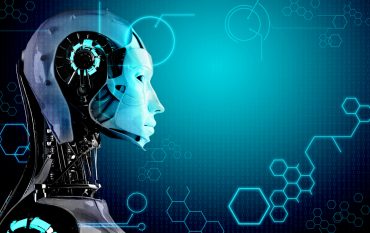
Video helps bridge a critical gap between online activity and physical presence. It’s this marriage of both activities that retail is after.
AI is transforming retail analytics, but there’s one method that may surprise you. Video analytics are giving retailers the chance to get insightful data on customer behavior in ways that don’t require complex permissions or expensive gear.
Retail analytics has left the realm of grainy security footage and entered into a rich world of customer insights. It uses complex algorithms to analyze and monitor large amounts of video – more than humans could ever process – allowing companies to make data-driven decisions.
See also: Continuous Intelligence Empowers Smart Mirrors
Let’s take a look at this often overlooked aspect of AI-driven transformation and how it’s allowing retailers to make better-informed decisions in areas that traditionally required trial and error and months of waiting on results.
Common AI-Based Video Use Cases
Retail can implement AI-analytics in several sticky situations. These components of retail management help streamline operations and create better customer experiences without increasing human responsibility or adding other operational costs.
- Better Customer Intelligence – Observing how many customers come in and when is a major analytic. It provides operational insights and branding insights, as well as revealing a host of other aspects of customer relationships.
- Retail Analytics – Retail spends a lot of time experimenting with displays, cashier and checkout placement, and studying customer movements throughout the store. Advanced video analytics allows stores to understand where and how long customers interact with products, displays, and products.
- Queue management – Analytics allows stores to set better policies for checkouts and can even set stores up for check out free capability.
- Better administrative control – Video analytics helps administration control fraud and theft, manage shrinkage, and offer smoother restocking with better inventory prediction.
- Ad analysis – Stores implant advertisements directly in the store, and video analytics provides real-time insights as well as offline insights into the behaviors of customers interacting with ads and displays, helping improve or increase sales.
What AI Offers That Others Don’t
It’s not just the ability to process vast amounts of video generated in retail. AI improves on other systems.
- Unlike RFID and other manual tracking methods, video retail analytics require no expensive equipment beyond set up and work without direct customer interaction.
- It’s more reliable than smartphone tracking and more scalable than using things like beacons. AI allows smaller businesses to set up analytics like their much more significant competition. And likewise, larger corporations can use insights to pivot like their smaller, more agile competition.
- Cameras are more accurate than other forms of shopping data. Stores can blend insights from customer behavior on camera and other data such as purchase activity into well-rounded data for efficiency.
- Unlike many forms of customer data, CCTV analytics doesn’t rely on customers installing, giving permission, and interacting with things like apps. While mobile analytics has its place, video and computer vision allows companies to observe more closely.
- Algorithms can analyze, monitor, and tag video faster and more consistently than human labor can, allowing companies to make use of all their video data, not just pieces. That same data can be mined for insights again and again due to this thorough cataloging.
Amazon’s Biggest Use Case
Amazon’s mission to streamline the retail process is getting a boost from analytics and computer vision. Amazon builds an online retail empire, but their desire to expand into physical stores could be the most significant use yet.
Computer vision has allowed Amazon to create Amazon Go, a series of frictionless shopping centers designed to remove a classic sticking point for consumers — standing in line for payment.
Computer vision and analytics allow people to walk out without experiencing that headache, but this isn’t all. Video analytics also helps Amazon build its store in ways that facilitate more sales and create a comprehensive, frictionless experience.
Amazon’s computer vision capability is freely available to those on AWS services, including competitors for this space, but Amazon is turning their licensing fees into fuel ford their expansion.
And it’s the capability of skipping the checkout that gets customers most excited. According to a study from A.T. Kearney, 72% of retail consumers cited this ability as their most coveted technology offer.
While many startups are looking to build the next big computer vision capability, meeting demand from Amazon’s competitors, as of yet, Amazon is still the biggest in the business. With more AmazonGo stores set to open in the coming years, other stores are taking notice. It may not be long before stores as we know them have fundamentally changed.
What Video Analytics Means for Retail
Video helps bridge a critical gap between online activity and physical presence. It’s this marriage of both activities that retail is after, and now it’s a simple matter of machine learning.
These algorithms are part of a shift towards continuous intelligence, giving businesses the chance to pivot quickly online and now with offline business decisions. Video tracks consumer behavior once people get into the store. Considering how hard it is to get people inside a store now, that’s valuable insight.
With more companies taking advantage of the scalable solutions that AI-driven analytics offers, retail experience is changing. Consumers could find out that common obstacles to shopping disappear with predictive analytics helping stock shelves and computer vision replacing those long queues to pay.
As computers learn to see as we do, they can combine our vision with their analytical strengths. They can catalog information efficiently and consistently, providing businesses with loops of insights they can return to again and again. They don’t add unnecessary labor or equipment costs and help close the gap of human error.





























